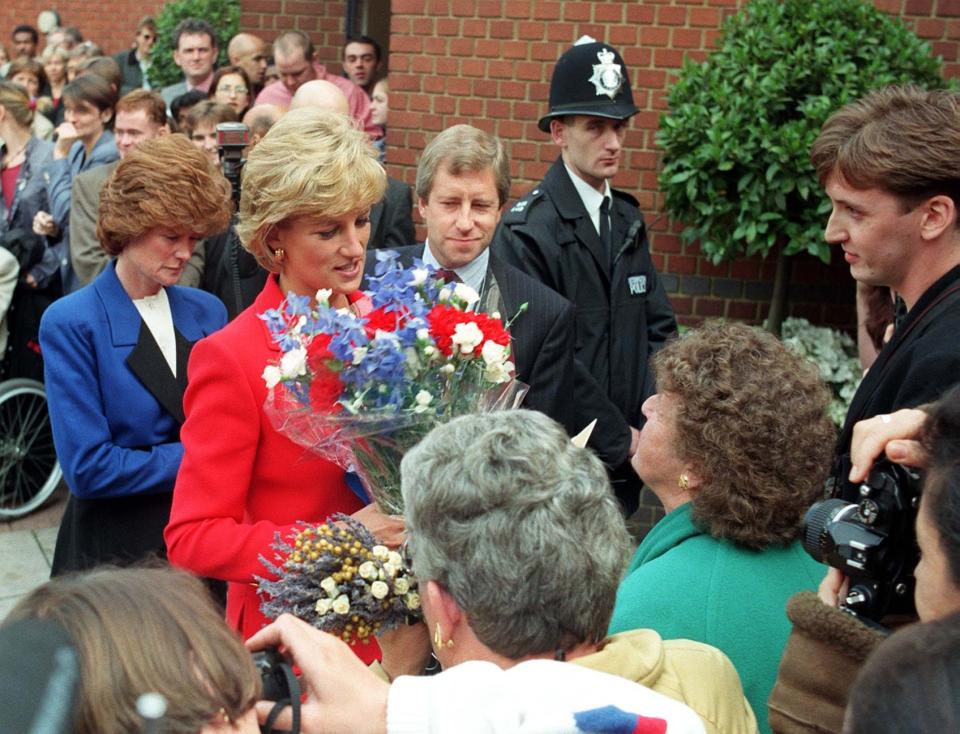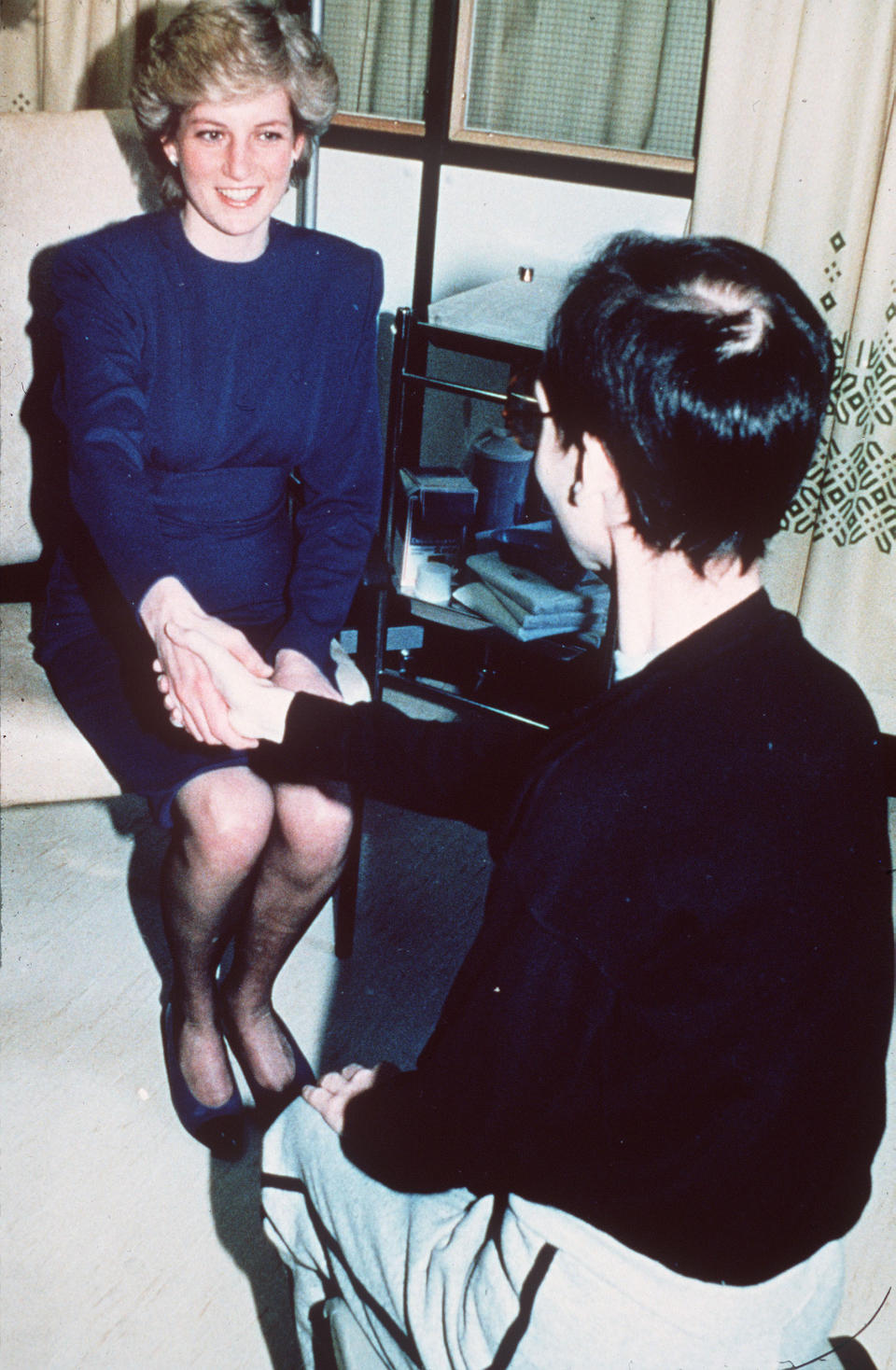Princess Diana’s secret visits to HIV and AIDs patients

There is good reason Princess Diana will likely be forever remembered as the People’s Princess.
Despite being a member of the country’s elite aristocracy, Diana always had a remarkable ability to connect with millions upon millions of people who had never even met her.
One of her strongest traits was her capacity to portray an empathy with those she did meet – something not often shown by members of the Royal Family, in public at least.
And nowhere was this more evident than her campaigning to raise the profile of those suffering from HIV.

In the late 1980s, damaging fallacies about the disease were commonplace.
One such example was the persistent misconception that the virus could be transmitted by skin-to-skin contact or by sharing the same toilet.
Subsequently, sufferers were treated with fear and often ostracised from society.
But, in a single moment of humanity, Princess Diana helped tear down the stigma of being HIV positive.
In April 1987, Diana opened the first purpose-built unit in the UK for people suffering from AIDs and HIV. In front of the world’s media, a smiling Diana shook the hands of AIDs patients without gloves on.
The image of the smiling Princess fearlessly shaking hands with patients was a huge step in dispelling this myth.

Diana’s harshest critics have often levelled the accusation that Diana used high-profile visits such as this partly as a means to increase the aura that had built up around her.
But, despite this, some of her most “compassionate and inspirational” work was done behind closed doors and away from the glare of the media.
According to those closest to her – and those who still work with HIV sufferers – Diana made a number of secret visits to HIV and AIDs patients during the 1980s and 1990s.
She would arrive unannounced at centres, without any media presence, to spend time with the patients, offering them comfort and compassion.
Ian Green, Chief Executive of Terrence Higgins Trust, recalls Diana’s covert visits to the London Lighthouse AIDs centre.
‘We’ve heard stories of when the Princess would pop into the Lighthouse, with no media, to spend time with people who were very ill.
‘Her compassion and desire to comfort people was inspirational,’ he said.
‘Princess Diana was a true champion of HIV awareness. She brought passion to the cause, and did things that were truly remarkable.
‘She used her status to do her utmost for people living with HIV, and our charity.’
Read more:
The Princess Diana obsession: Why the late royal’s enduring legacy hits a note with millennials
Do the paparazzi still harass the royal family like they did two decades ago?
Princess Diana’s fashion evolution in pictures, from her wedding to her death
The day Britain stood still: Princess Diana’s funeral in pictures
The night of Princess Diana’s death as told by the only survivor of the car crash, Trevor Rees-Jones
Diana’s support for sufferers, both in public and in private, offered an invaluable psychological boost for patients.
Peter Tatchell, a human rights activist who campaigned for the rights of people suffering from AIDs at the time, described the experience of his friend Jim Wilson, an HIV patient who met Diana, and who has since passed away.
‘On a personal level he found it very reassuring and heartening to have the comfort and support of Princess Diana,’ he told Yahoo News UK.
‘While the government and other institutions were doing very little, she was leading the way.
‘In a broader sense, Jim felt that Princess Diana’s commitment was a game changer in terms of public perception for people with AIDs.’
John O’Reilly was a nurse on the ward during Diana’s milestone visit in April 1987.
‘My first impressions of Princess Diana were that she was warm, sophisticated, elegant and smart. And I warmed to her instantly’, he told the BBC’s Witness programme.
‘Princess Diana demonstrated that she cared because she took everybody’s hand.
‘This was Diana the Princess of Wales coming in, gloveless, and shaking our patients’ hands as well as ours. That was very moving.’
When Diana entered the ward itself, the 12 beds were empty. The patients were hiding from the media, unhappy with the way people suffering from AIDs were usually portrayed.
But eventually, one patient agreed to be pictured shaking hands with a gloveless Diana.
‘I don’t think it took a lot of convincing for him. He was dying. And he thought “well, so what?” said O’Reilly.
‘If a royal was allowed to go in and shake a patient’s hand, somebody at the bus stop or in the supermarket could do the same. That really educated people.’
Former royal photographer Arthur Edwards was also present at that milestone moment.
‘One day I got a call saying Diana was going to go and open Britain’s first Aids ward at the Middlesex Hospital in London
‘Like many people back then, I was nervous because Aids was the disease everyone feared,’ he told The Sun.
‘But Diana walked in and shook hands vigorously with the first patient she saw and gave him a big smile.
‘She then went round to speak to all the patients, some of whom were very ill.
‘Diana listened to their stories intently. She was literally face to face with them, just inches apart.
‘I realised she was showing everybody there was nothing to be scared of. Then and there, she took the fear out of Aids.’

 Yahoo News
Yahoo News 

